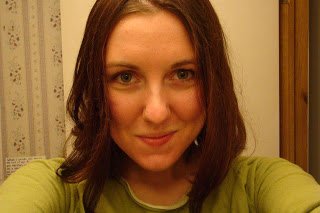My grad student Andrea Hitefield is doing an independent study in writing creative non-fiction. One of her assignments: vet and compile a list of resources for writers interested in pursuing this topic. Here's her list:
Telling True Stories: A Nonfiction Writers’ Guide from the Nieman Foundation at Harvard University. Edited by Wendy Call and Mark Kramer. New York: Plume, 2007. Practical advice on writing nonfiction from the country’s most prominent journalists and authors. Authors from Tom Wolfe to Nora Ephron share from their perspective on the writing process from finding topics to structure. Each chapter is written by a different author, varying in style and tone.
Dillard, Annie, and Lee Gutkind. In Fact: The Best of Creative Nonfiction. New York: W.W. Norton and Co., 2004. A book filled with articles from the top creative nonfiction writers as compiled in the magazine “Creative Nonfiction” which is edited by Gutkind. Each chapter is a piece of nonfiction. Subjects and tone vary. There is no instructional content in this compilation.
Franklin, John. Writing for Story: Craft Secrets of DramaticNonfiction by a Two-Time Pulitzer Prize Winner. New York, NY: Penguin,1986. Franklin includes two articles of his own and uses them as examples whilewalking the reader through the writing process from beginning to end.
Gutkind, Lee. You Can’t make this stuff Up: The Complete Guide to Writing Creative Nonfiction—from Memoir to Literary Journalism and Everything in Between. Phiadelphia: Da Capo Press, 2012.Gutkind, the godfather of Creative Nonfiction, describes each aspect of writing, from concept to completion.
Hart, Jack.
Storycraft: The Complete Guide to Writing Narrative Nonfiction (Chicago Guides to Writing, Editing, and Publishing). Chicago: University of Chicago Press, 2011. Pulitzer Prize winner, Hart, provides methods and mechanics of narrative nonfiction. He uses his own career in journalism as anecdotes but also draws from magazines, documentaries, and radio programs.
Kidder, Tracy, and Richard Todd. Good Prose: The Art of Nonfiction. New York: Random House, 2013. Kidder and Todd cover three styles of creative nonfiction: narrative, essay, and memoir. Drawing on their own experience, good and bad, they show the writing process. Also includes a wide range of authors and a discussion of the ethical challenges of nonfiction writing.
King, Stephen. On Writing: A Memoir of the Craft. New York, NY: Pocket Books, 2000. King shares his personal story of his writing journey including influential moments to his craft. He also includes various tips for writers.
Lamott, Anne. Bird by Bird: Some Instructions on Writing and Life. New York: Random House, 1994. Lamott takes the reader through the writing process from characters to plot development. She uses personal anecdotes to shape the reader.
Lopate , Phillip. To Show and to Tell: The Craft of Literary Nonfiction. Free Press, 2013. A Dallas writer, Lopate offers over 40 years worth of experience as a writing and professor in this “nuts-and-bolts” approach to literary nonfiction. Lopate offers instruction for storytellers “like a long walk with a favorite professor—refreshing, insightful, and encouraging in often unexpected ways.” (Amazon.com)
Miller, Brenda, Tell it Slant: Writing and Shaping Creative Nonfiction. New York: McGraw-Hill, 2004. In this work, Miller describes the difference between merely reporting facts as a journalist and doing it in a creative way as literary journalism.
William Strunk and E. B. White. The Elements of Style. 4thed. New York: MacMillan, 2000. An essential book for any writer. Details grammatical rules and styles ofwriting in a near bullet pointed layout.
Zinsser, William. On Writing Well. NewYork: Harper Perennial, 2001. Zinsser presents an easy to read,sound work on writing in general. This book covers the fundamental principlesbut not specifics of writing creative nonfiction. This book is beneficial forwriters of all genres.

